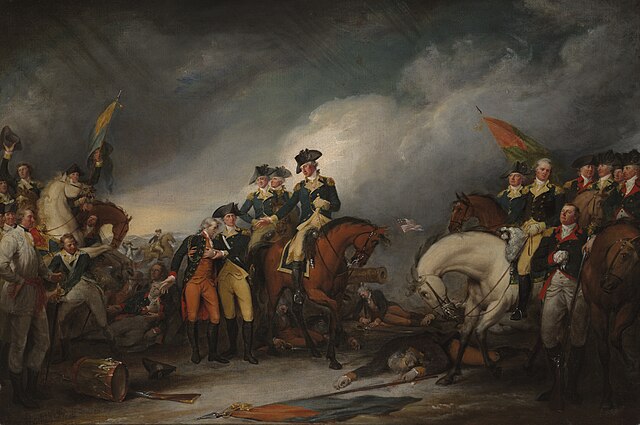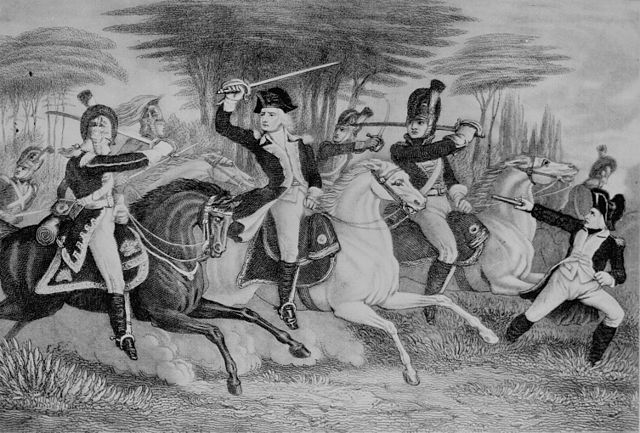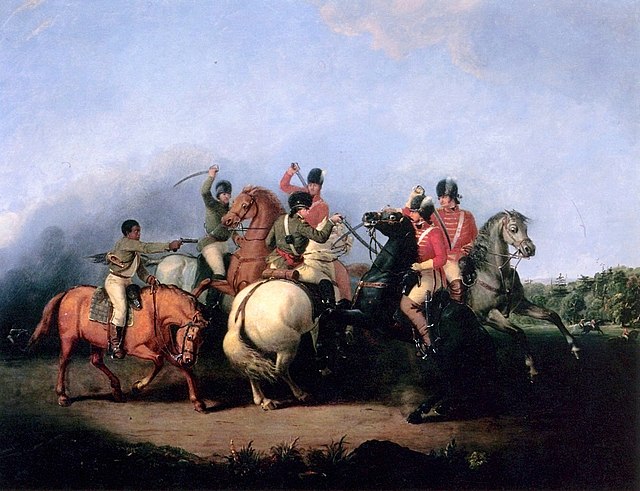William Washington was a cavalry officer of the Virginia militia and Continental Army during the American Revolutionary War, who also served on General George Washington's staff during the naval war with France in 1798 and held a final rank of brigadier general. Primarily known as a commander of light dragoons, he led mounted troops in a number of notable battles in the Carolinas during the campaigns of 1780 and 1781. Following the conflict, this William Washington moved to South Carolina, where he married and served in the state legislature as well as led the Seventh Brigade of the South Carolina militia. Cavalry Commander William Washington of Stafford County and South Carolina has often been confused with his distant cousin William Augustine Washington, also a Revolutionary War patriot and planter, who served as a delegate representing Westmoreland County, Virginia.
William Washington
The painting The Capture of the Hessians at Trenton, December 26, 1776 by John Trumbull. William Washington stands at right and James Monroe is on the ground at left
William Washington at the Battle of Cowpens
The Battle of Cowpens, painted by William Ranney in 1845. The scene depicts an unnamed black soldier (left) firing his pistol and saving the life of Colonel William Washington (on white horse in center).
James Monroe was an American statesman, lawyer, diplomat, and Founding Father who served as the fifth president of the United States from 1817 to 1825, a member of the Democratic-Republican Party. He was the last Founding Father to serve as president as well as the last president of the Virginia dynasty. His presidency coincided with the Era of Good Feelings, concluding the First Party System era of American politics. He issued the Monroe Doctrine, a policy of limiting European colonialism in the Americas. Monroe previously served as governor of Virginia, a member of the United States Senate, U.S. ambassador to France and Britain, the seventh secretary of state, and the eighth secretary of war.
Portrait by Samuel Morse c. 1819
Marker designating the site of James Monroe's birthplace in Monroe Hall, Virginia
The Capture of the Hessians at Trenton, December 26, 1776, by John Trumbull, showing Captain William Washington, with a wounded hand, on the right and Lt. Monroe, severely wounded and helped by Dr. John Riker, left of center, behind the mortally wounded Hessian Colonel Johann Gottlieb Rall. Rall is being helped by American Major William Stephens Smith
Elizabeth Kortright







